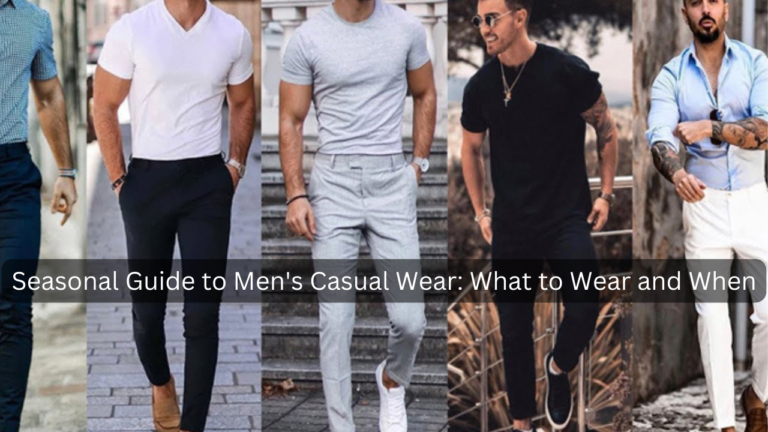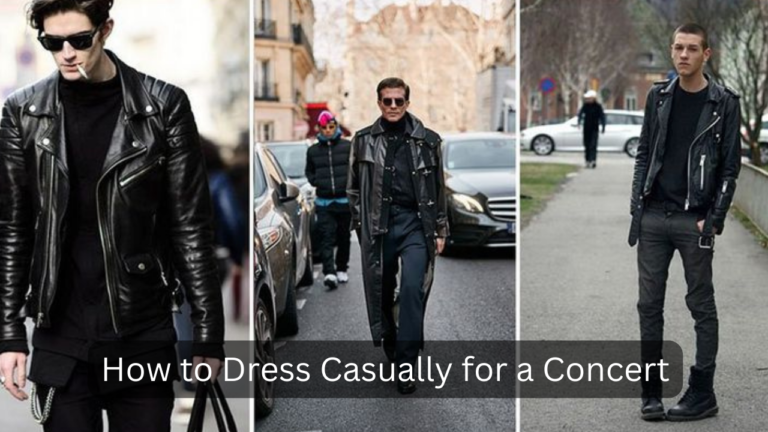

Table of Contents
Introduction
Casual Friday, a cherished tradition in many workplaces, offers employees a refreshing break from the formality of the workweek attire. It’s a day when professional dress codes loosen up, allowing individuals to express their personal style while maintaining a sense of workplace appropriateness.
Importance of Casual Friday in Workplaces
Casual Friday plays a pivotal role in fostering a relaxed yet productive atmosphere in workplaces. It not only boosts employee morale by offering a change from the usual corporate attire but also encourages a more laid-back and collaborative environment. This day often signifies the end of a busy workweek, providing a mental transition towards the weekend while still maintaining a level of fashion professionalism.
Balance Between Comfort and Professionalism
Finding the perfect Casual Friday outfit involves striking a delicate balance between comfort and professionalism. While the dress code is more relaxed, it’s essential to choose clothing that is both comfortable and appropriate for a professional setting. This balance ensures that employees feel at ease while still presenting themselves well to colleagues, clients, and supervisors.
Setting the Tone for the Weekend
Casual Friday also sets the tone for the weekend ahead. It allows individuals to seamlessly transition from work mode to a more relaxed mindset, preparing them for leisure activities or social engagements. The attire chosen for Casual Friday often reflects personal style preferences and can influence how individuals unwind and enjoy their time outside of work.
Understanding Casual Friday Dress Codes
Casual Friday dress codes vary widely depending on the workplace culture and industry norms. Here’s an overview to help navigate this relaxed yet professional day:
Overview of Typical Dress Codes
Business Casual: This dress code typically includes a blend of professional attire with a more relaxed feel. Men might opt for dress pants or khakis paired with a collared shirt, while women often choose dress pants, skirts, or dresses that are not overly formal.
Smart Casual: Slightly more relaxed than business casual, smart casual allows for a wider range of personal style expression. Men might wear a combination of tailored trousers with a polo shirt or a sweater, while women often opt for skirts, dresses, or stylish pants paired with blouses or sweaters.
Guidelines from Workplace Policies
Workplace policies provide essential guidance to ensure that Perfect Casual Friday Outfit attire remains appropriate and aligned with company values:
Clear Expectations: Policies clarify what is acceptable and what should be avoided on Casual Friday, maintaining professionalism even in a relaxed environment.
Respectful Dress: Employees are encouraged to dress in a way that respects colleagues, clients, and the workplace environment, balancing comfort with a polished appearance.
Importance of Dressing Appropriately Even on Casual Days
While Casual Fashion Friday allows for more relaxed attire, dressing appropriately remains crucial for several reasons:
Professionalism: Maintaining a professional appearance reflects positively on individuals and the company, regardless of the day of the week.
Client Interactions: Even on Casual Fridays, employees may interact with clients or stakeholders who expect a certain level of decorum.
Company Culture: Adhering to workplace dress codes, including on Perfect Casual Friday Outfit, helps reinforce a positive company culture and cohesive team environment.
These insights into best casual wear friday dress codes and workplace policies will help readers navigate this relaxed yet important aspect of professional attire effectively.
Key Elements of a Casual Friday Outfit
Top Wear
Examples: Polo Shirts, Casual Button-Downs, Sweaters
Polo Shirts: Ideal for a relaxed yet polished look. Opt for solid colors or subtle patterns like stripes. Ensure the fit is neither too tight nor too loose.
Casual Button-Downs: Choose lightweight fabrics such as cotton or linen. Patterns like checks or plaids can add interest without being too formal.
Sweaters: V-neck or crew-neck sweaters in neutral tones or classic patterns like cable knit. Layer over a collared shirt for added style.
Choosing Appropriate Fabrics and Colors
Fabrics: Breathable materials like cotton or blends with moisture-wicking properties are comfortable choices. Avoid overly wrinkled fabrics or materials that look too casual, like heavy fleece.
Colors: Stick to neutral tones like navy, gray, and beige for versatility. Subtle patterns or muted hues add interest without overwhelming the cool look.
Bottom Wear
Options: Chinos, Well-Fitted Jeans, Casual Trousers
Chinos: Versatile and comfortable, they come in various colors. Opt for a slim or tailored fit for a polished appearance.
Well-Fitted Jeans: Dark wash jeans without distressing or excessive fading are suitable. Ensure they fit well and aren’t overly casual.
Casual Trousers: Lightweight fabrics like cotton or linen in relaxed cuts. Avoid overly formal event styles or heavy materials.
Considerations for Fit and Style
Fit: Tailored but not overly tight. Pants should sit comfortably at the waist without sagging or being too snug.
Style: Choose styles that complement your top wear and overall outfit. Avoid extremes in right fit or overly trendy cuts that may not be suitable for a workplace setting.
Footwear
Suitable Choices: Loafers, Derbies, Clean Sneakers
Loafers: Leather or suede in classic colors like brown or black. Ensure they are polished and free from scuffs.
Derbies: Versatile lace-up shoes that bridge the gap between casual and formal. Opt for leather or suede in muted tones.
Clean Sneakers: Minimalist designs in leather or canvas. Avoid bright colors or overly sporty styles.
Matching Footwear with the Overall Outfit
Coordination: Footwear should complement the color and style of your clothing. Match leather shoes with belts for a cohesive look.
Every Occasion: Choose footwear appropriate for both the workplace and potential after-work activities. Ensure they are clean and well-maintained.
Accessories
Importance of Subtle Accessories
Enhancement: Subtle accessories like belts, watches, and minimalist jewelry add polish without overpowering the outfit.
Examples: Opt for leather belts in classic shades, watches with simple dials and metal bands, and understated jewelry like a single ring or bracelet.
These tips will help you assemble a polished yet comfortable Perfect Casual Friday Outfit that balances professionalism with personal style.
Building Your Personal Style
Embracing Personal Taste While Respecting Dress Codes
Building a personal style that respects workplace dress codes involves:
Understanding Ultimate Guidelines: Familiarize yourself with what is and isn’t appropriate in your workplace. This ensures you can express your style tips within the boundaries of professionalism.
Adapting Within Limits: Choose colors, patterns, and styles that resonate with your personal taste while still adhering to dress code requirements. For example, opt for tailored fits and classic pieces that are versatile yet stylish.
Incorporating Seasonal Elements
Layering Techniques: In colder months, layering adds depth and functionality to your outfits. Start with a base layer, add a sweater or cardigan, and top with a jacket or coat. This not only keeps you warm but also allows for creative expression.
Seasonal Fabrics: Choose fabrics like wool, tweed, and cashmere for winter, and cotton or linen for spring and summer. These materials not only reflect seasonal trends but also enhance comfort and style.
Expressing Individuality Through Clothing Choices
Signature Pieces: Incorporate items that define your style, such as statement jackets, unique accessories, or distinctive footwear.
Mixing Styles: Blend classic wardrobe staples with contemporary trends to create a look good that is uniquely yours. Experiment with textures, colors, and accessories to showcase your personality while maintaining professionalism.
Building your personal style involves a balance of self-expression and adherence to workplace norms. By integrating seasonal elements and selecting clothing that reflects your individuality, you can craft a wardrobe that is both stylish ideas and appropriate for professional settings.
Tips for Creating a Polished Look
Fit Matters: Tailoring and Alterations
Tailored Fit: Invest in clothing that fits well off the rack or have it professionally tailored. Well-fitted clothing enhances your silhouette and conveys attention to detail.
Alterations: Tailor garments to fit your body shape perfectly. Adjustments to sleeve length, pant hem, and waistline can transform an outfit from average to exceptional.
Grooming: Maintaining a Neat Appearance
Personal Care: Prioritize grooming habits such as regular haircuts, well-kept nails, and clean-shaven or neatly groomed facial hair.
Clothing Care: Keep garments clean, pressed, and free of wrinkles. Pay attention to details like lint removal and shoe maintenance for a polished overall appearance.
Layering: Adding Depth Without Sacrificing Comfort
Base Layers: Start with well-fitted basics like shirts and pants that form the foundation of your outfit.
Middle Layers: Add depth with sweaters, cardigans, or vests. Choose complementary colors and textures to enhance visual interest.
Outer Layers: Finish with a tailored jacket or coat that complements the rest of your ensemble. This final layer adds structure and polish.
Quality Over Quantity: Investing in Versatile Pieces
Versatile Basics: Build your wardrobe with timeless essentials such as a quality suit, classic dress shirts, and versatile trousers.
Durability: Invest in garments made from durable fabrics that retain their shape and color over time. Quality pieces not only look better but also last longer.
Cost-Effectiveness: While initial costs may be higher, quality clothing offers better value in the long run due to durability and timeless style.
These tips ensure you consistently present a polished appearance, reflecting professionalism and attention to detail in your personal style.
Dos and Don’ts of Casual Friday Fashion
Common Mistakes to Avoid
Don’t Overlook Fit: Avoid wearing overly baggy or tight clothing. Opt for well-fitted pieces that flatter your body shape without being restrictive.
Avoid Overly Casual Attire: Steer clear of clothing that is too casual for a professional setting, such as ripped jeans, beach day wear, or overly revealing outfits.
Mind the Condition: Ensure your clothing is clean, free of wrinkles, and in good repair. Avoid garments that are faded, stained, or worn out.
Etiquette in Casual Dress Environments
Follow Workplace Guidelines: Adhere to your company’s Casual Friday dress code policies. Respect any specific rules regarding acceptable attire.
Maintain Professionalism: While the dress code is relaxed, maintain a level of professionalism in your clothing choices. Dress as if you might still interact with clients or senior management.
Being Mindful of Cultural or Organizational Norms
Respect Diversity: Be mindful of cultural sensitivities or religious considerations that may influence clothing choices in your workplace.
Observe Organizational Culture: Take cues from senior colleagues or company culture to gauge appropriate attire. Dressing in line with company values fosters a sense of belonging and respect.
These guidelines ensure that Casual Friday attire enhances workplace morale and productivity while reflecting professionalism and respect for organizational norms.
Conclusion
Casual Friday serves as more than just a break from the usual work attire; it embodies a balance between professionalism and personal expression. By embracing this day, employees not only foster a more relaxed workplace environment but also showcase their individuality through clothing choices.
Recap of the Importance of Casual Friday
Casual Friday plays a vital role in workplace culture by:
Boosting Morale: Offering a change of pace from the routine enhances employee satisfaction and morale.
Fostering Creativity: Allowing personal style encourages creativity and self-expression among team members.
Maintaining Professionalism: Despite the relaxed dress code, it’s essential to uphold a level of professionalism that aligns with workplace standards.
Encouraging Personal Style Within Workplace Guidelines
Balancing personal style with workplace guidelines involves:
Respecting Boundaries: Adhering to dress codes ensures attire remains appropriate for professional settings.
Expressing Individuality: Incorporating personal taste through color choices, accessories, and style preferences within the limits of workplace norms.
Final Tips for Creating a Confident and Stylish Casual Outfit
To craft a confident and stylish Perfect Casual Friday Outfit:
Choose Well-Fitted Clothing: Tailored pieces enhance your appearance and comfort.
Select Quality Fabrics: Opt for durable materials that maintain their shape and color.
Accessorize Thoughtfully: Add subtle accessories like belts, watches, or scarves to complete your look without overwhelming it.
By understanding the significance of Casual Friday, embracing personal style within workplace guidelines, and following these final tips, employees can navigate this day with confidence and style, contributing positively to both their professional image and overall workplace culture.





